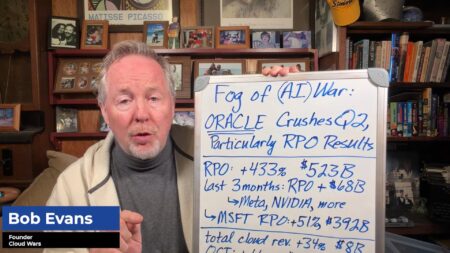At Google Cloud Next 2025, Google Cloud VP and CTO Will Grannis joins Bob Evans to explore how AI is reshaping enterprise technology. Grannis shares how Google Cloud’s OCTO team works with customers on complex challenges, using DeepMind research, next-gen TPUs, and AI-native infrastructure, while noting the fading line between B2B and B2C and the cultural changes needed to adapt.
Inside Google Cloud’s AI Strategy
- Google Cloud Is AI-Native at Its Core: Grannis says that Google Cloud’s approach to AI is foundational. The organization’s mindset, shaped by Google’s long-standing leadership in AI, infuses every layer of its stack, from infrastructure to user interfaces. With a legacy of deploying machine learning at scale for over a decade, Google Cloud doesn’t just offer AI tools—it helps customers reimagine their businesses through AI-native thinking, using products like DeepMind and innovations born across Google’s consumer ecosystem.
- The OCTO Team Solves the Hardest Problems with Customers: Grannis leads the Office of the CTO (OCTO), a team he jokingly calls “the nerdy Navy SEALs.” They tackle highly complex, unsolved customer challenges that can’t be addressed by existing products. Rather than building solutions in isolation, they co-create alongside customers. They start with business outcomes and design backward.
- Multi-Modality and Multi-Agent Systems Are the Future: Looking ahead, Grannis predicts that multi-modal AI, i.e. models that process images, text, speech, and even scent, will become the standard. He also foresees a shift from single-function agents to “agentic workflows” powered by multiple orchestrated AI agents. Google is prototyping orchestration with projects like Astra, that signal a future where AI is not only intelligent but contextually aware and collaborative.
The Big Quote: “People . . . spend a lot of time just trying to take a PDF and analyze it. It seems very true. It is a pain . . I think that’s one reason why a NotebookLM or a product like that has been so popular because it really attacks the heart of what people hate doing at work. [AI] puts them in the driver’s seat. They can ask questions, they can do analysis.”
Learn more:
Check out OCTO, NotebookLM, and Google Cloud.






